The exposition area of the museum is 3 750 m2. Museum expositions cover the entire area of the former USSR and are divided into three main blocks: expositions on regional geology; expositions in accordance with types of minerals; expositions of monographic paleontological collections. About 80,000 samples are on permanent display. Expositions on regional geology are located in three halls (European, Asian and partially Central) and systematized according to the originally laid down geological and geographical principle of zoning, which in the current version was finally formed in the early 60s of the last century: 15 first-order and 73 second-order regions.

Lay out of the regional geology exhibition area
For each region, in compliance with legends of geological maps at a scale of 1:200,000, main types of rocks are presented. They are grouped in accordance with general, regional and local stratigraphic units (stratified deposits) or complexes (non-stratified igneous rocks) and geological age. There are also index species of organic residues, main types of minerals. Stone material is accompanied by graphic materials (maps, charts, columns, sections, etc.) and explanatory texts.
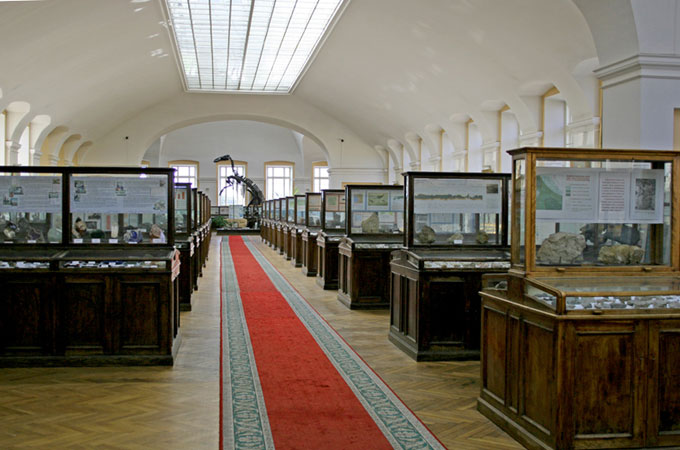
European Hall. General view
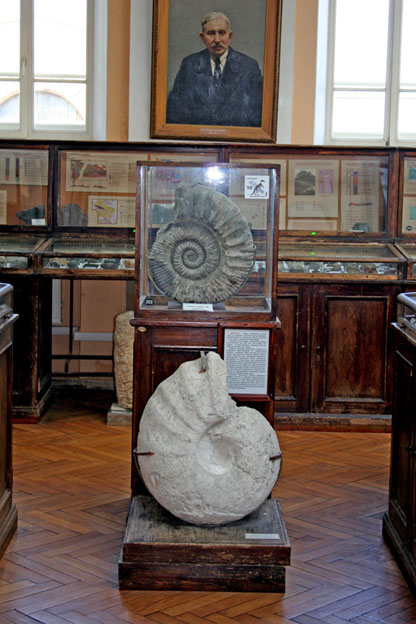
Fragment of the exhibition devoted to geology of the Carpathian-Caucasian mountain region. The European Hall

Asian Hall. General view

Stand with mammoth remains. Asian Hall
In the exposition of halls of regional geology, the visitor can see such unique and interesting exhibits as the skeleton of a duckbill dinosaur, the lower jaw of a mosasaur, fragments of the bony shield of ostracoderm, large shells of ammonites, remains of large Quaternary mammals (mammoth, woolly rhinoceros, bison) and many others.
Expositions of the minerals section are located in two halls (non-metallic and metallic minerals) and cover the entire USSR.
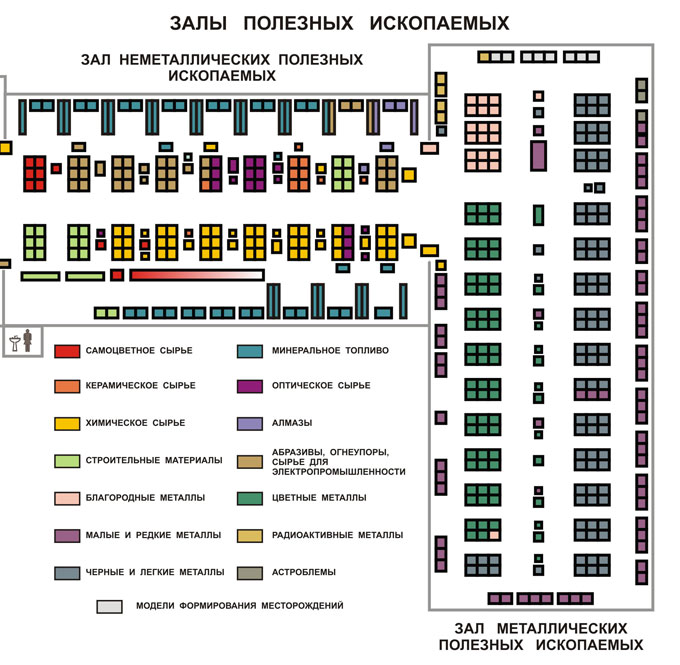
Plan of expositions in accordance with types of minerals
Exposition materials are grouped for non-metallic minerals in accordance with types of mineral raw materials - ceramic, chemical, optical, etc.
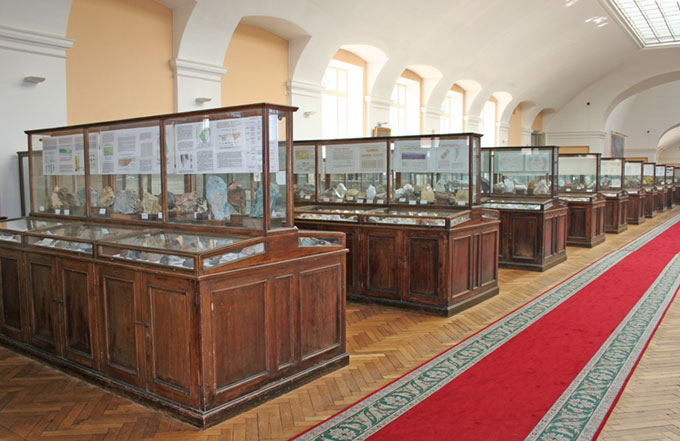
Hall of Non-metallic Minerals. General view
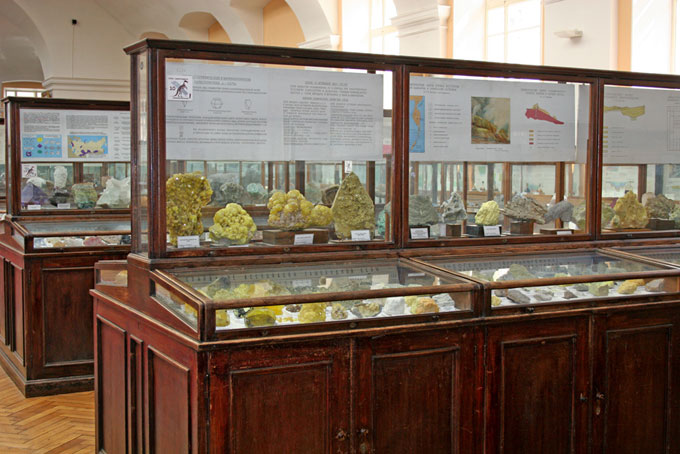
“Sulphur” exhibition in the Hall of Non-metallic Minerals

“Quartz” exhibition in the Hall of Non-metallic Mineras
For metals, in accordance with groups (ferrous, non-ferrous, noble metals, etc.), and within these units, in accordance with specific types of minerals.

Hall of Metallic Minerals. General view

The “Copper Mineralogy” exhibition in the Hall of Metallic Minerals

The “Gold” exhibition in the Hall of Metallic Minerals
Every species is represented by its main mineralogical varieties and major mineral deposits grouped in accordance with mineragenetic types. For each deposit, there are samples of varieties of ores, contact and host rocks.
Totally, the exhibition presents collection materials on 1300 mineral deposits of 72 types of minerals. All exhibitions are accompanied by graphic materials and explanatory texts.
In the halls of minerals, visitors can see such unique and interesting exhibits as a cube of rock salt weighing 1 ton, large ore samples of charoite, jade, malachite, kimberlite with a visible diamond crystal, giant crystals of beryl, calcite, phlogopite, rock crystal druses, a mica window from a chapel of the 17th century and many others.
Expositions on monographic paleontological collections are located in two separate halls - Paleozoic and Meso-Cenozoic, and in showcases on the balustrade. These expositions are intended only for specialists; monographic halls are off-limits to the public. Together with the collections, published materials dedicated to them are stored. The “Catalogue of Monographic Paleontological Collections” and three issues of the “Catalogues of Fossil Fauna and Flora Species Holotypes” stored at the TsNIGR Museum were published.

Hall of Monographic Paleozoic Paleontological Collections. Photo dated 1970s
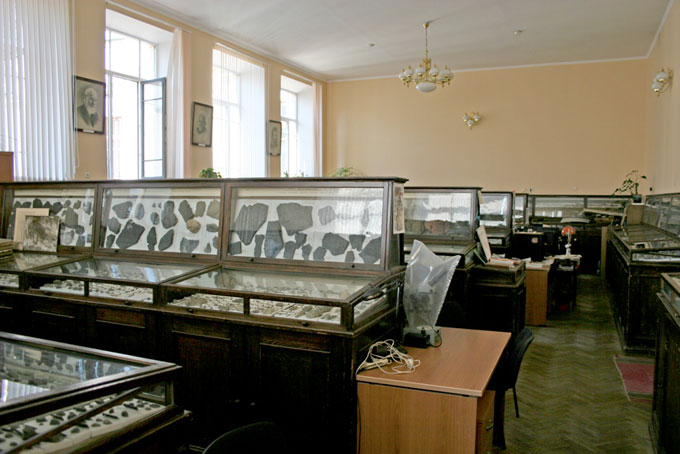
Hall of Monographic Paleozoic Paleontological Collections

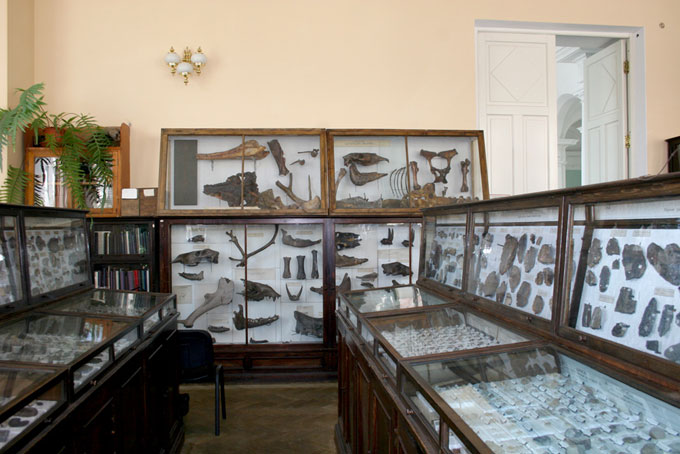
Hall of Monographic Mesozoic and Paleozoic Collections
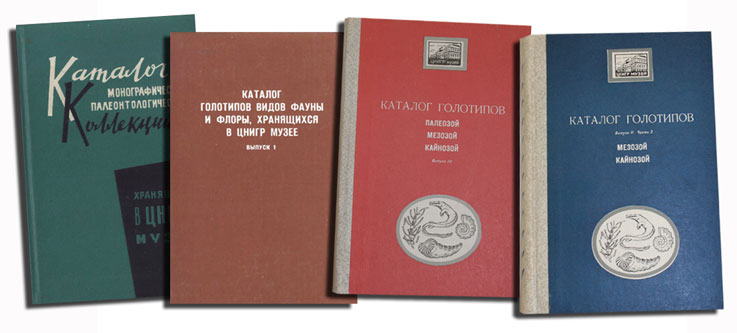
“Catalogue of Monographic Paleontological Collections” and the “Catalogues of Fossil Fauna and Flora Species Holotypes” stored at the TsNIGR Museum